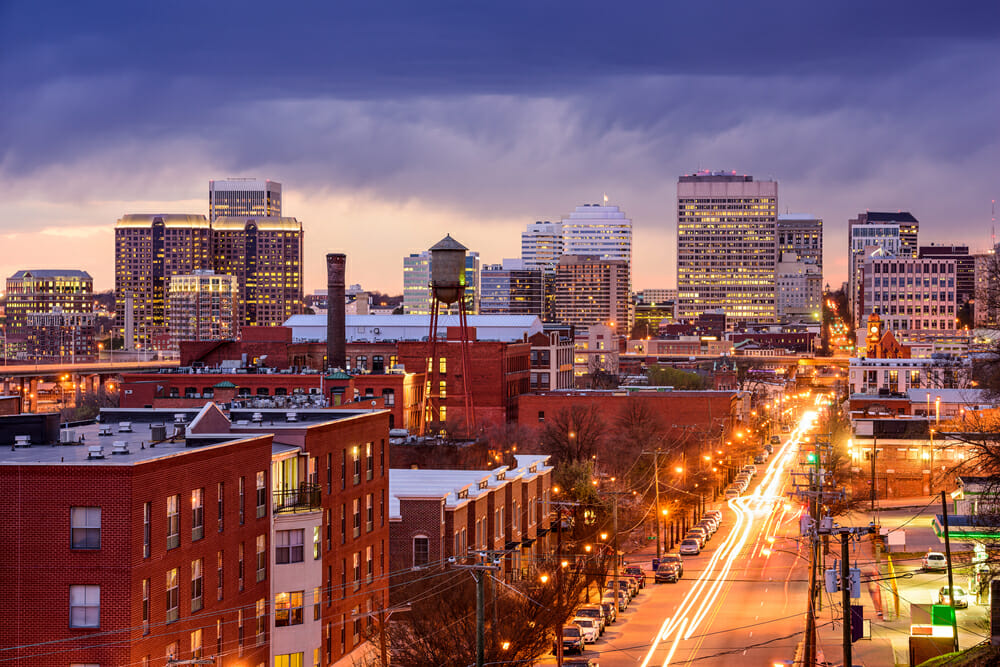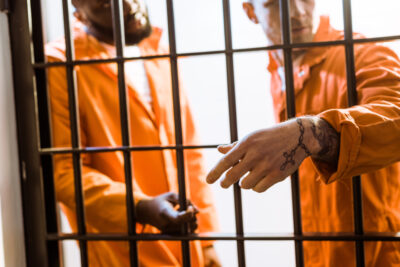
Criminal Justice and Rehabilitation in Virginia
Several factors affect how each state constructs and manages its criminal justice program. Simply, geographic size, cultural attitudes, statewide political inclinations, per capita GDP, overall poverty rate, and other factors influence a state’s crime rate, criminal justice system, and approach to rehabilitation. This article summarizes crime in Virginia, Virginia’s prison population, and criminal reform in the state.
Prison Population Data in Virginia
The first step to understanding criminal justice in Virginia begins with analyzing Virginia’s prison population. Knowing how many people are incarcerated in Virginia gives one direct insight into the scope of criminal justice efforts in that state. In addition to getting to the bottom of prison population data, one should also get answers to questions like:
- What criminal rehabilitation programs are used in Virginia?
- Are there alternatives to incarceration in Virginia?
- How many people are incarcerated in Virginia?
- What are the biggest prisons in Virginia?
- What is Virginia’s recidivism rate?
- What is Virginia’s crime rate?
According to the Bureau of Justice Statistics, Virginia has the 17th highest incarceration rate in the nation, just ahead of Indiana but just behind Wyoming. The Old Dominion State incarcerates about 351 residents for every 100,000 living there. The overall incarceration rate in the U.S. is 350 per 100,000, almost identical to the Virginia rate.1

But how many people are incarcerated in Virginia? According to the National Institute of Corrections, Virginia has 71 jails in 133 counties.2 The jail population was 28,970 as of 2019. Virginia also has 26 state prisons and a prisoner population of about 36,091. Finally, Virginia’s community corrections program manages about 65,520 people under probation and 1,921 under parole. According to the Urban Institute, the $1,248,956,790 Virginia spends on its Department of Corrections yearly is the sixth-largest item on the state’s annual budget.3
Virginia contracts with private prisons to incarcerate about 1,540 prisoners or about 4.3% of the state’s prison population.4 These prisoners are in one private facility operated by GEO Group, a private prison contractor. That prison is called the Lawrenceville Correctional Center, the largest prison in the state.5
Crime Rate in Virginia
The rate at which a state incarcerates its population can help one understand how the state views crime and prioritizes what crimes receive imprisonment and which do not. Further, the crime rate of any given state is also worth mentioning because it goes hand-in-hand with the state’s criminal justice system and its efficacy (or lack thereof).
According to state-collected data, the following are the 2021 crime rates for Virginia:6
- The violent crime rate in Virginia increased in 2021 to 194.4 (for every 100,000 people) from 183.0 in 2020.
- 16,823 violent crime offenses were reported in 2021, compared to 15,713 in 2020. That represents a 7.1% increase.
- Homicides in Virginia increased from 528 in 2020 to 562 in 2021, a 6.4% increase.
- Motor vehicle thefts and attempted thefts also increased in 2021, up 3.8% compared to 2020.
- On the bright side, drug arrests plummeted by about 46% in 2021 compared to 2020.
- Unfortunately, exactly 123 hate crime offenses involving 106 victims were reported in Virginia in 2021.
- Burglaries decreased in Virginia in 2021 by 8.3% from the 2020 figures.
- Fraud offenses increased by 8.4% in 2021. About 80% of victims were individuals, and 11.3% were businesses.
Recidivism Rate in Virginia

A critical factor in learning about criminal justice is recidivism because it measures how many former offenders leave prison, commit crimes again, and then wind up back in prison. In simple terms, recidivism directly indicates whether or not a state’s criminal justice system is working for those who go through it.
According to state reporting, Virginia has one of the lowest recidivism rates in the nation. According to a February 2023 report by the Virginia Department of Corrections, Virginia reported a 20.6% recidivism rate, the seventh year in a row that the state has had the second lowest or the lowest rate of recidivism in the nation.7
While reform modalities and criminal rehabilitation have much to do with a state’s recidivism rate, Virginia criminal justice experts say the cohesiveness of the state’s criminal justice institutions has made a huge difference in creating one of the most effective criminal justice systems in the nation. “Virginia’s low rate of recidivism is the result of the work of dedicated professionals within the Virginia Department of Corrections (VADOC) in collaboration with law enforcement and other local and state partners,” says Secretary of Public Safety and Homeland Security Robert Mosier. “This effort helps to reduce victimization within the Commonwealth and lowers the overall cost of operating our criminal justice system.”
Criminal Reform Programs in Virginia

Image courtesy of vadoc.virginia.gov
Virginia has implemented successful rehabilitation programs for inmates, yet about one in five formerly incarcerated Virginians still go on to re-offend and end up back in prison. To do everything possible to get the state’s recidivism rate down to zero, Virginia should implement the following reform modalities in prisons:
- Substance abuse and addiction treatment programs for offenders who are hooked on drugs and alcohol
- Life skills programs, counseling, and coping strategies to help offenders live crime-free lives after their release
- Work training/vocational programming to assist offenders in learning employable skills for post-incarceration life
Ensuring offenders have access to programs that will help them address the underlying issues that led them to commit a crime in the first place and that will prepare them for life outside of prison should go a long way in reducing recidivism.
Alternatives to Incarceration in Virginia
Part of a state’s criminal justice system should always be to offer alternatives to incarceration, particularly for nonviolent offenders. These can manifest in several ways:
- Probation
- Community service
- Work release programs
- Substance abuse programs
- Educational programs and courses
In addition to these programs, Virginia also has a program specially designed to provide low-level, nonviolent offenders with a way to experience reform without being exposed to the criminal justice system. Called the Community Corrections Alternative Program, the mission statement of that program is as follows: “Community Corrections Alternative Program is an alternative program to incarceration, giving probationers and parolees the opportunity to engage in treatment, education, vocational training, and employment in a structured setting in order to promote long-lasting public safety.”8
Perhaps most importantly, policymakers should also implement educational programs inside prisons in Virginia. Such programs can provide inmates with the tools they need to create productive, responsible, crime-free lives after release.
Sources:
- BJS. “Prisoners in 2020 – Statistical Tables.” Bureau of Justice Statistics, 2020. bjs.ojp.gov
- NIC. “Virginia 2019.” National Institute of Corrections, 2019. nicic.gov
- Urban. “Project Virginia.” Urban Institute, 2023. urban.org
- SentencingProject. “Private Prisons in the United States.” The Sentencing Project, 2019. sentencingproject.org
- GEO. “Lawrenceville Correctional Center.” GEO Group, Inc., 2023. geogroup.com
- VSP. “Virginia’s Annual Crime Analysis Report for 2021 Now Available on Virginia State Police Website.” Virginia State Police, 2023. vsp.virginia.gov
- VADOC. “Virginia’s Recidivism Rate Remains Among Nation’s Lowest.” Virginia Department of Corrections, 2023. vadoc.virginia.gov
- VADOC. “Community Corrections Alternative Program.” Virginia Department of Corrections, 2023. vadoc.virginia.gov
Related Articles
Criminal Justice Reform Extends Rights to Felons Who Have Served Their Sentences
For decades, voter enfranchisement or disenfranchisement for incarcerated and formerly incarcerated individuals has been debated. An estimated 4.6 million Americans are barred from voting due...
Read more >>
What Is the Scope of Private Prisons in the U.S.?
In 2001, the Federal Bureau of Justice Assistance authored a report analyzing then-emergent issues regarding private prisons in the United States. According to the authors...
Read more >>
Where States Get it Right. The Importance of After-Incarceration Programs for Former Inmates
Criminal justice is a complicated and intricate subject. While the U.S. has the largest prison population in the world, efforts are being taken in several...
Read more >>
Gainful Employment a Critical Factor in Post-Incarceration Life
Recidivism is one of the most important aspects of the United States criminal justice system and easily the most studied metric. The National Institute of...
Read more >>





